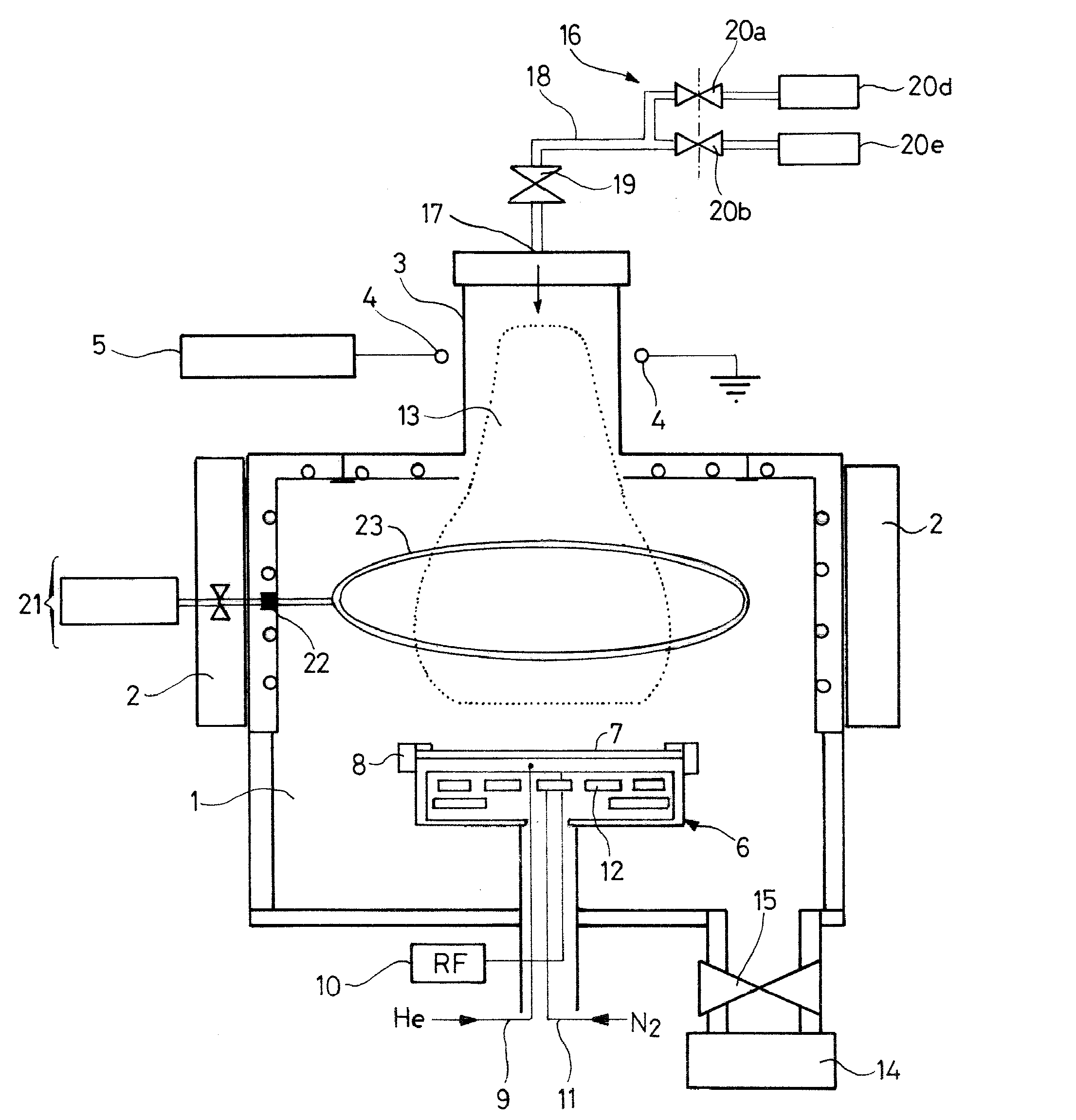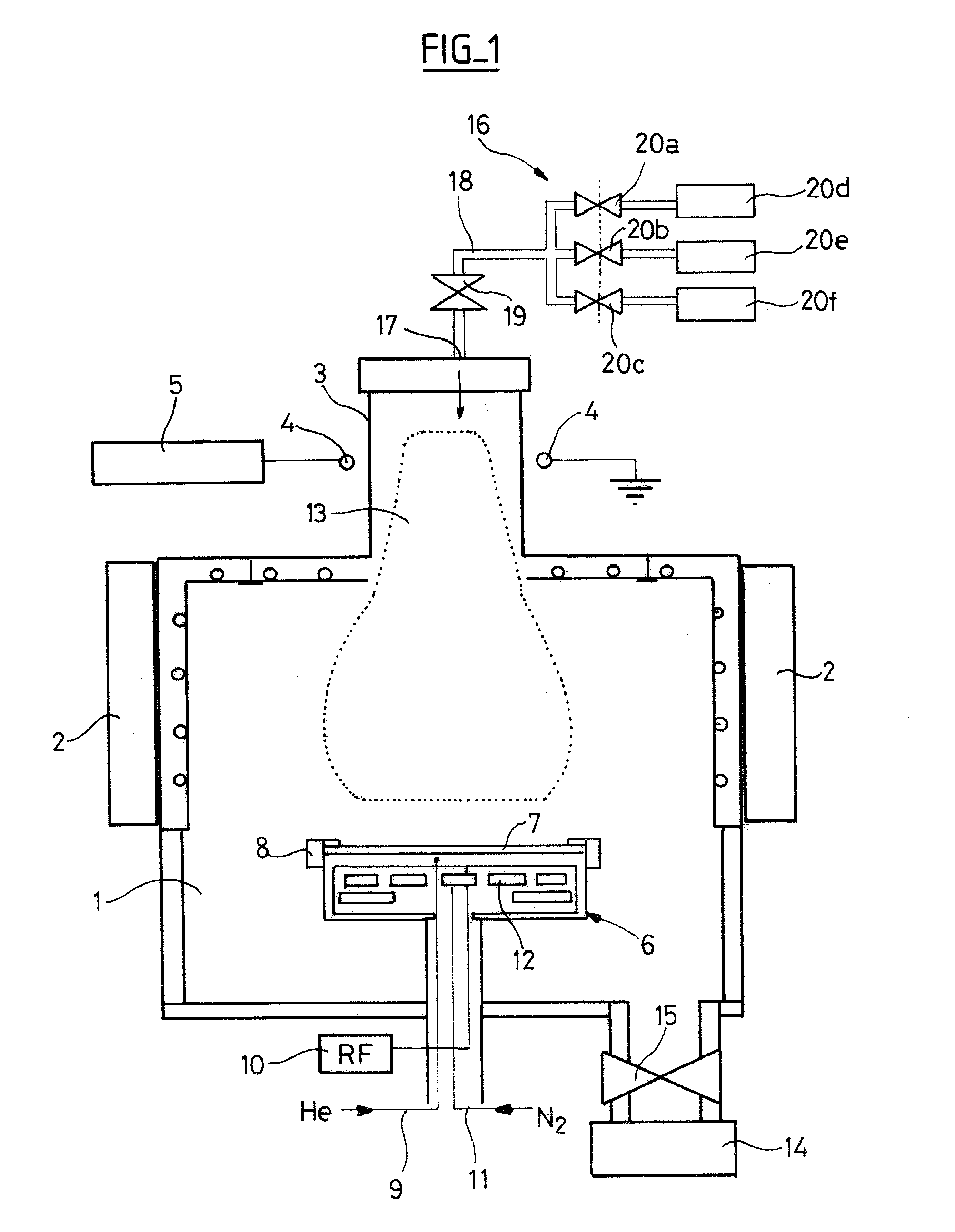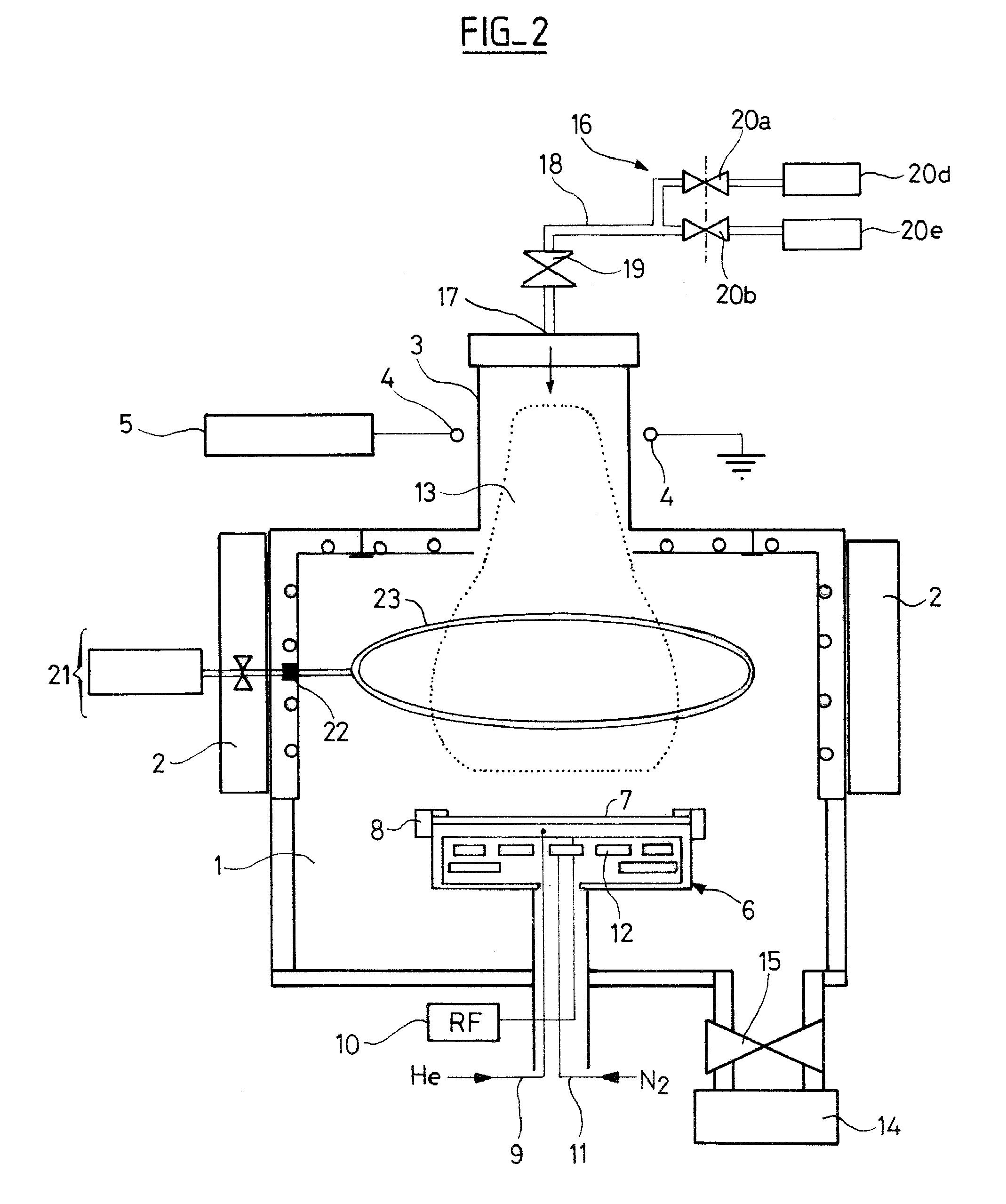Anisotropic etching method
a etching method and anisotropic technology, applied in the field of anisotropic etching method, can solve the problems of etching more anisotropic without increasing the duration of the etching operation, and the cost of a very slow rate of attack, etc., to achieve the effect of strengthening or, less sensitive to the variation of process parameters, easy sublimation
- Summary
- Abstract
- Description
- Claims
- Application Information
AI Technical Summary
Benefits of technology
Problems solved by technology
Method used
Image
Examples
Embodiment Construction
[0045] The device represented in FIG. 1 is a plasma etching machine that comprises a process chamber 1 surrounded by permanent magnets 2 in a multipolar arrangement to reduce electron loss at the walls of the chamber. The chamber 1 communicates with a plasma source the dielectric material tube 3 whereof, in which the plasma is formed, is surrounded by a coupling electrode 4 fed with radio-frequency (RF) alternating current by an RF generator 5 supplying an RF (13.56 MHz) power P from 500 W to 2000 W.
[0046] The chamber 1 contains a substrate-carrier 6. A substrate 7 to be etched approximately 100 mm thick is fixed to the substrate-carrier 6 by mechanical or electrostatic means, here mechanically by means of a ring 8, for example. The substrate 7 is separated from the substrate-carrier 6 by a film 9 of helium. A bias voltage U from 20 V to 60 V, preferably of the order of 50 V, is applied to the substrate 7 by means of an RF (13.56 MHz) or low-frequency (50-500 kHz) generator 10. The...
PUM
| Property | Measurement | Unit |
|---|---|---|
| Temperature | aaaaa | aaaaa |
| Temperature | aaaaa | aaaaa |
| Temperature | aaaaa | aaaaa |
Abstract
Description
Claims
Application Information
 Login to View More
Login to View More - R&D
- Intellectual Property
- Life Sciences
- Materials
- Tech Scout
- Unparalleled Data Quality
- Higher Quality Content
- 60% Fewer Hallucinations
Browse by: Latest US Patents, China's latest patents, Technical Efficacy Thesaurus, Application Domain, Technology Topic, Popular Technical Reports.
© 2025 PatSnap. All rights reserved.Legal|Privacy policy|Modern Slavery Act Transparency Statement|Sitemap|About US| Contact US: help@patsnap.com



